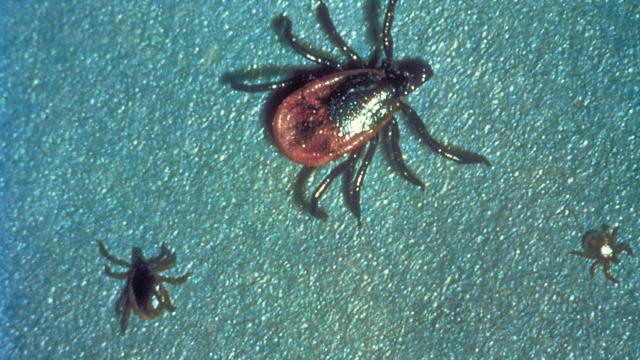Pennsylvania is dealing with a potentially serious tick problem. Environmental officials have recently warned the public that a population of ticks in the state appear to be carrying incredibly high levels of a rare but potentially deadly tickborne virus. They’re now preparing to contain and further study these ticks, while also reminding people to be on guard against their bite.
The warning was issued late last month by the Pennsylvania Department of Environmental Protection. While conducting routine tick surveillance around the state, they discovered that sampled adult ticks collected at Lawrence Township Recreational Park in Clearwater County had “an unusually high infection rate” of the Deer Tick Virus (DTV) — 92%, to be specific.
DTV was first discovered in the U.S. in the late 1990s. It’s a close relative of the Powassan virus, another tickborne infection, and both are considered lineages of the same species. DTV in particular is spread through the bite of a female Ixodes scapularis tick, or black-legged tick, the same species that primarily spreads Lyme disease. But unlike Lyme or many other tickborne infections, it can take as little as 15 minutes for a bite to successfully transmit Powassan/DTV to a person.
Powassan virus disease, from either lineage, is thought to be very rare in the U.S., though there is evidence that cases are becoming more common over time. Many people who contract Powassan may not experience any symptoms, but it can also cause severe swelling of the spinal cord and brain. About 10% of these neuroinvasive cases die, while half of survivors are left with lingering neurological symptoms. There is no specific treatment for infection, though efforts are ongoing to develop a vaccine for it.
The sample size collected from Lawrence Township does appear to be small (25 ticks in total), but it’s also an unprecedented rate of infection. As far as officials can tell, it’s the highest surveillance rate ever documented in the state or in the research literature, and far above the average 0.6 per cent found throughout Pennsylvania in 2021.
“The infection rate of ticks sampled from the Lawrence Township Recreational Park is extremely high. Deer Tick Virus transfers very quickly through the bite from an infected tick, and the health outcomes from the Deer Tick Virus are more severe than other tickborne illnesses typically seen in Pennsylvania,” said DEP Secretary Patrick McDonnell in the agency’s advisory.
The DEP has said that it will conduct further testing of the area along with implementing “control” measures to reduce the local tick population. And they’re urging the public to take anti-tick precautions. Tick bite season is concentrated around the spring and summer, but ticks can be active whenever temperatures are above freezing. The increasingly warmer climate is also allowing populations to survive longer into the winter and to further expand their range.
Practical steps for avoiding ticks in their native environments (woody areas predominantly) include: wearing light-coloured outer clothing, tucking shirts into pants, and pants into socks, and performing a tick spot check of yourself and accompanying pets after you get inside. More tips can be found here.
Editor’s Note: Release dates within this article are based in the U.S., but will be updated with local Australian dates as soon as we know more.
